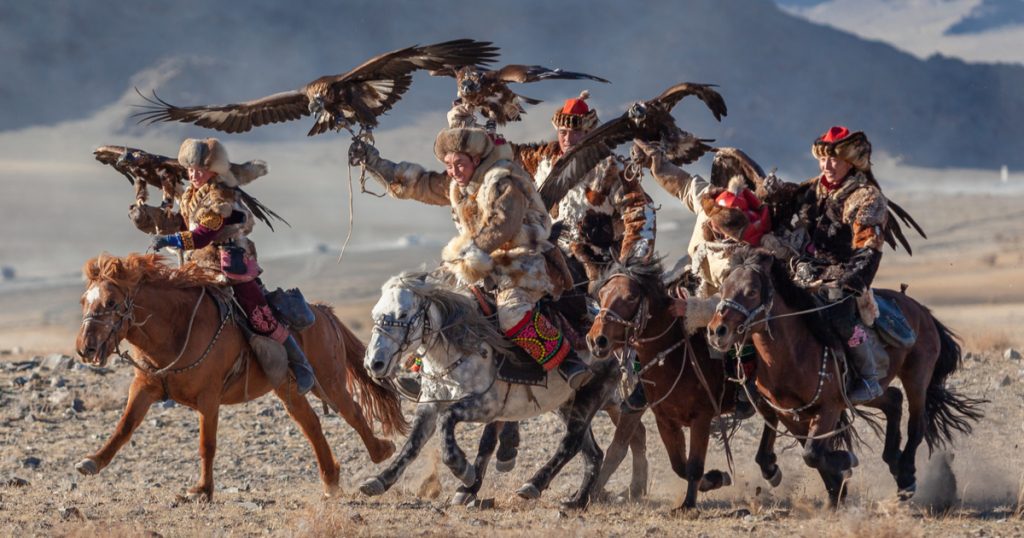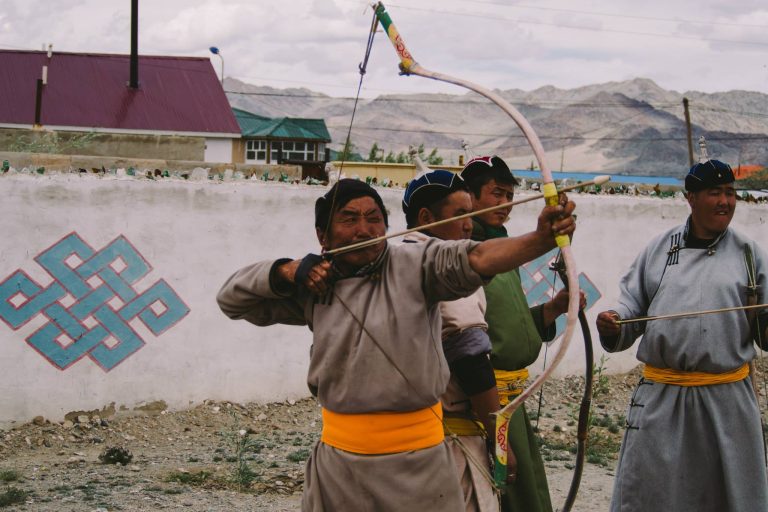Mongolian eagle hunters, also known as berkutchi, are skilled hunters who use golden eagles to hunt prey in the mountains of Mongolia. The tradition of eagle hunting dates back to the time of Genghis Khan, and is still practiced by a small number of people today.
The training of an eagle hunter begins with the capture of a young eagle from its nest. The eagle is then trained to hunt small animals such as foxes, hares, and rabbits. The training process is a long and patient one, as the eagle must develop a bond with its owner and learn to follow his commands.
Once the eagle is fully trained, the eagle hunter will take it into the mountains in search of prey. The hunter will spot a target, such as a fox or hare, and release the eagle to swoop down and capture it with its talons. The hunter will then retrieve the prey and reward the eagle with a piece of meat.
Eagle hunting is not only a means of survival for the hunters, but also a way of preserving their cultural heritage. The practice has been recognized by UNESCO as an Intangible Cultural Heritage of Humanity, and has gained popularity among tourists as a unique cultural experience.

However, the tradition of eagle hunting is facing challenges. The number of golden eagles in Mongolia has declined due to habitat loss and poaching, and the practice of capturing eaglets from the wild is becoming increasingly unsustainable. Efforts are underway to promote sustainable practices, such as using captive-bred eagles and promoting conservation efforts, to ensure the survival of the tradition for future generations.
Overall, Mongolian eagle hunters are an integral part of the country’s cultural heritage, and the practice of eagle hunting continues to captivate people around the world with its unique blend of tradition and skill.





